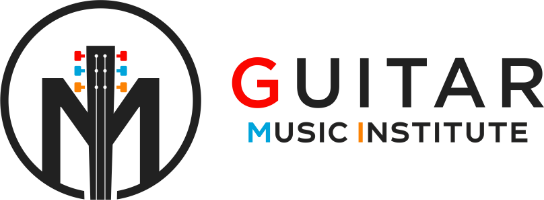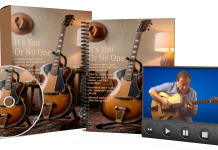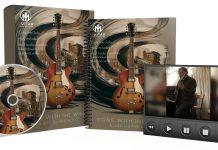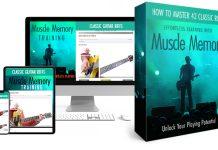This post may contain affiliate links. As an Amazon associate, Google associate as well as associate for other programs, Guitar & Music Institute may earn commissions from qualifying purchases.
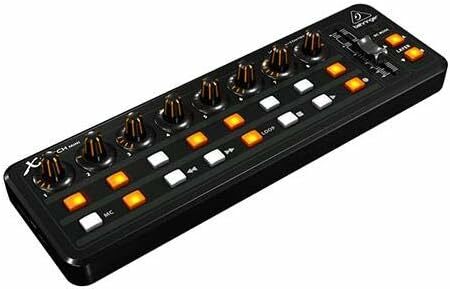
In the realm of music production, MIDI control surfaces have become an indispensable tool for musicians, producers, and DJs alike. These versatile devices have revolutionized the way we create and manipulate sound, allowing us to control software instruments, digital audio workstations, and other music production tools with a tactile and intuitive interface. As technology continues to advance, MIDI controllers have become more sophisticated, offering a wide range of features and options to suit different needs and preferences. If you’re looking to upgrade your studio setup or add a new dimension to your live performances, you’ve come to the right place. In this article, we’ll be diving into the world of MIDI controllers, exploring the top brands, reviewing their best offerings, and considering their prices.
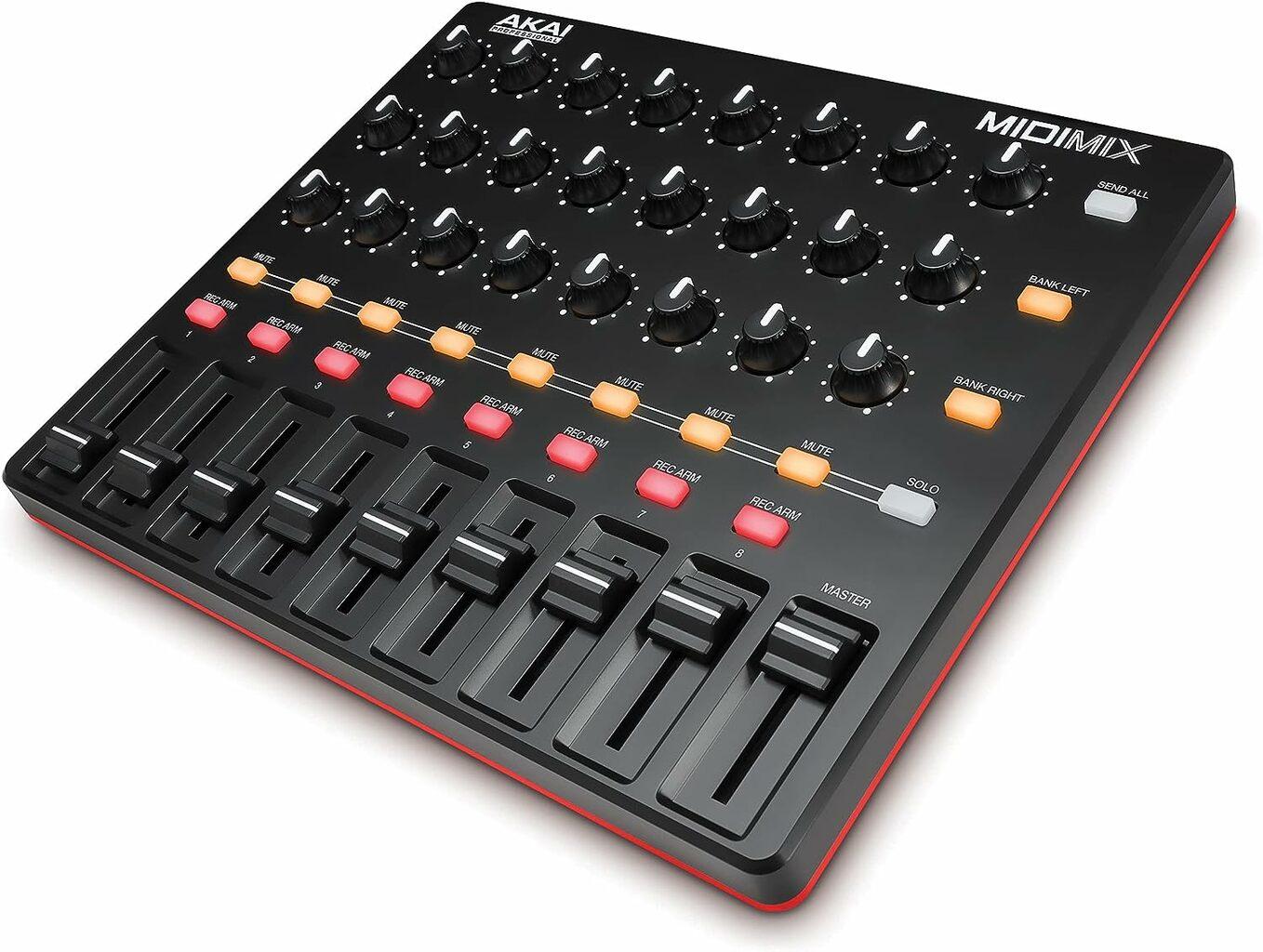
The AKAI Professional MIDImix proves to be a valuable addition to any music production setup. With its USB MIDI controller mixer, users have the ability to control various parameters with ease. The assignable faders and master fader offer precise control over volume levels, while the 24 knobs and 16 buttons allow for effortless manipulation of effects and other functions. The 1 to 1 mapping with Ableton Live ensures a seamless integration with the popular digital audio workstation. From the durable build to the intuitive interface, this mixer proves to be a worthy investment for both amateur and professional musicians.
Ultra-portable and lightweight
Compact and light, with a convenient carrying slot for an iPad
Effective Ableton Live controller
Noisy faders
No motorized faders
Style: Electronic
Faders: 8 individual line + 1 master
Buttons: 16
Software: Ableton Live
Product size: 1.2 x 7.92 x 9.36 inch
USB model: MIDImix
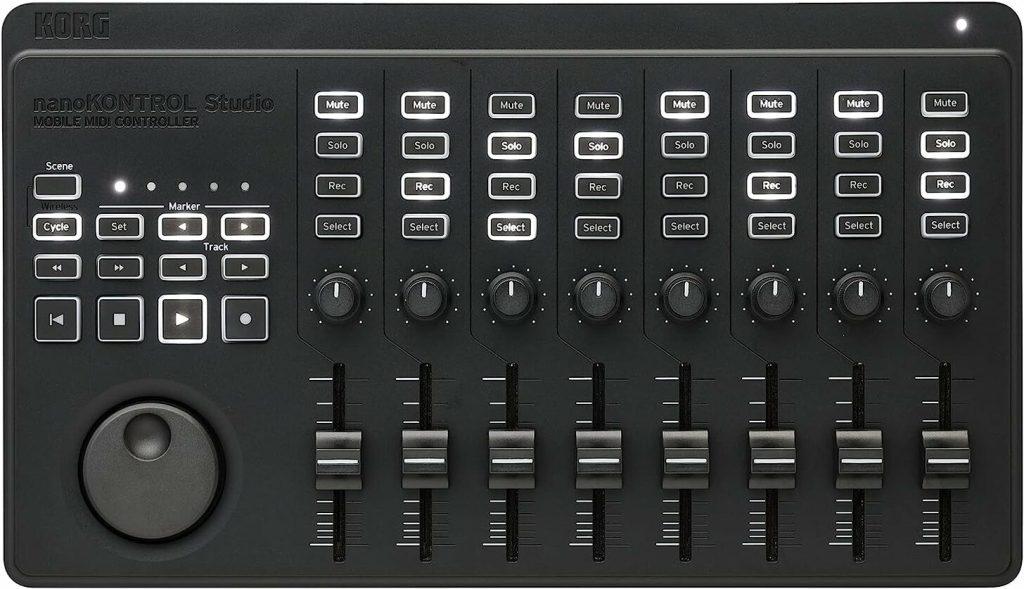
Korg Midi Controller
The Korg Midi Controller (NANOKONST) is a remarkable addition to any music production setup. With its sleek design and compact size, this MIDI controller offers the perfect balance between convenience and functionality.
The keys on the NANOKONST are incredibly responsive, allowing for precise control and smooth playing. The touch-sensitive sensors make it easy to add expressive elements to your music, while the programmable knobs and buttons give you the flexibility to customize your setup to fit your needs.
One of the standout features of this controller is its compatibility with a wide range of software and devices. Whether you’re using it with a DAW or a synthesizer, the Korg Midi Controller (NANOKONST) seamlessly integrates with your existing setup.
Overall, the Korg Midi Controller (NANOKONST) is a solid choice for both beginners and experienced musicians alike. Its user-friendly interface and versatile design make it a valuable tool for music production.
Wireless Bluetooth connectivity
Korg NanoStudio or Korg NanoKontrol Studio can be used with MacOS, iOS, or Windows 10 devices
Only 45 keys
Keys are too small, tightly spaced
Power type: Battery (Alkaline)
Features: Transport keys, Mixer section
Design: Refined and stylish
Technology: USB and wireless
Keyboard: 45 keys
Usage: Mobile or Desktop

Behringer Mini USB Controller
The Behringer X-Touch Mini Universal USB Controller is a budget-friendly option for those in need of a compact digital audio workstation controller. With its Mackie Control Mode and 60mm master fader, this controller offers a great deal of functionality at an affordable price.
Although it may not have all the bells and whistles of higher-end controllers, the Behringer X-Touch Mini gets the job done effectively. Its compact size makes it easily portable, perfect for on-the-go music producers or DJs. The Mackie Control Mode allows for seamless integration with popular digital audio workstations, enhancing workflow and productivity.
Overall, the Behringer X-Touch Mini Universal USB Controller is a solid choice for those looking to control their digital audio workstations at an affordable price. While it may not have all the advanced features of more expensive options, it still provides excellent functionality and ease of use.
Compact and portable
USB bus-powered
Works with any DAW
Can be used with other controllers
Small size
No motorized faders or touch-sensitive controls
Control type: USB
Protocols Supported: Mackie Control
Faders: 1x Long-wearing 2.3″ (60 mm)
Brand: Behringer
Size (inches): 4.02 x 12.8 x 1.85
Musical Style: Electronic
Limited Warranty: Adorama 1 Year

Monoprice MIDI Controller
The Monoprice Midi Controller (625893) is a highly recommended MIDI controller for musicians and producers alike. From the trusted brand of Monoprice, known for their quality audio equipment, this controller delivers on its promise of functionality and performance. With a sleek design and user-friendly interface, it allows for seamless control over various MIDI devices and software, making it a great addition to any studio setup.
The keys have a satisfying feel, providing a good balance of resistance and sensitivity. The knobs and sliders are also well-designed, offering a smooth and precise control over parameters. Additionally, the transport buttons and pads are responsive and intuitive, making it easy to navigate and trigger samples and clips.
Overall, the Monoprice Midi Controller (625893) offers excellent value for its price. Whether you’re a beginner or a professional, this MIDI controller will surely elevate your music production experience.
Compact size
Lightweight and portable, fits in a backpack
Cheaper than the AKAI MPD218
Underwhelming keyboard
Monoprice doesn’t have a mobile app
Weight: 10.4 ounces
Size: 15.5 x 4.5 x 1.8 inches
MIDI Machine Control buttons: 6
Connector Type: USB
Backlit Pads: 12
Type: Compact
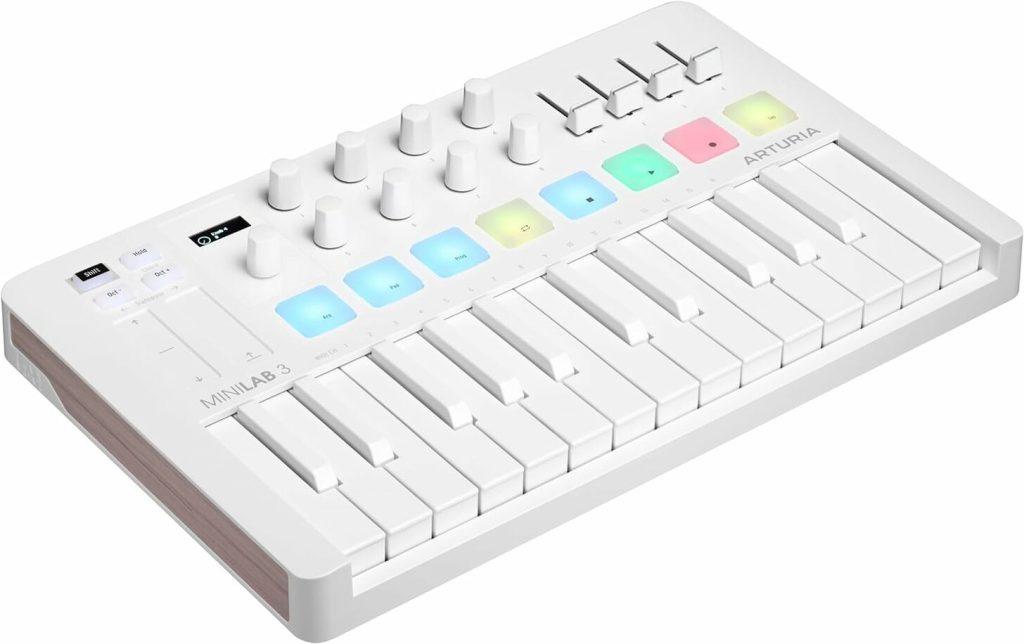
Arturia MIDI Controller MiniLab 3
The Arturia MiniLab 3 Alpine MIDI Controller is a fantastic addition to any music production setup. With its sleek alpine white design, it not only looks great but also offers a wide range of features that make it a versatile tool for musicians.
The 25 keys on the MiniLab 3 are highly responsive and comfortable to play, making it easy to create melodies and harmonies. The eight multicolor pads are perfect for triggering samples or programming drum beats, adding a dynamic element to your productions.
One of the standout features of the MiniLab 3 is its all-in-one software package, which includes Analog Lab Lite, Ableton Live Lite, and other powerful music production software. This allows you to start creating music right out of the box, without having to purchase additional software.
Additionally, the MiniLab 3 is highly portable and lightweight, making it ideal for musicians who are on the go. Its sturdy construction also ensures durability, so you can rely on it for years of use.
Overall, the Arturia MiniLab 3 Alpine MIDI Controller is a high-quality product that offers great value for its price. Whether you are a beginner or a professional producer, this controller will enhance your creativity and streamline your music production process.
8 performance pads
Great set of bundled software
Comes bundled with 8 software instruments and controllers, Ableton Live Lite and Analog Lab Lite included
Great mini keys with aftertouch
Comes with Analog Lab, Ableton Live Lite, and UVI Grand Piano software
Additional software can be confusing for beginners
Not all software features available on other softwares
Weight: 3.21 pounds
Technology: USB
Keys: 25 (velocity sensitive)
Controller: MiniLab 3 Only
Size: 13.98 x 1.97 x 8.66 inch
Feature: Easy keyboard
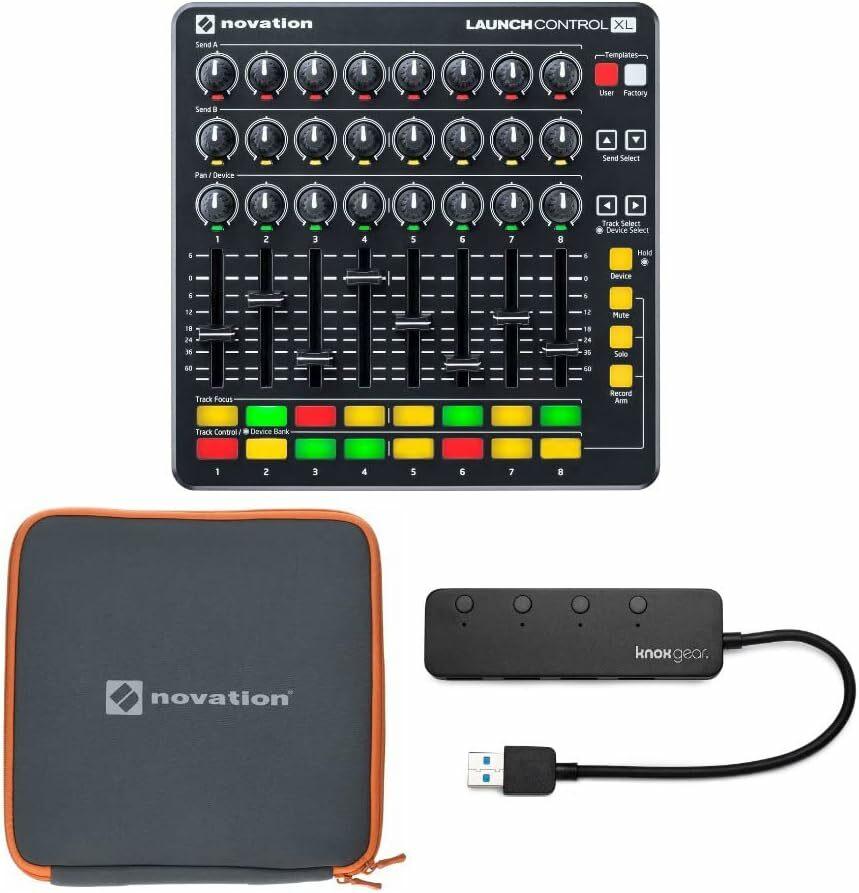
Novation DJ Controller Bundle
The Novation Launch Control XL MIDI USB Ableton Live Controller Bundle is an essential tool for any DJ or music producer. With its sleek design and compact size, it offers maximum control over your Ableton Live sessions. The bundle includes a case to protect your Launch Control XL and a 4 port USB hub for easy connectivity. The controller itself is highly responsive and the layout is intuitive, making it a breeze to navigate through your tracks and effects. The build quality is top-notch, ensuring durability even during intense live performances. Overall, the Novation Launch Control XL MIDI USB Ableton Live Controller Bundle is a must-have for anyone looking to take their DJing or music production to the next level.
Build quality is noticeably better than Launchpad
Easily create custom control mappings
Great for use with Ableton Live
Customizable layout
Requires external power supply
Overlapping functions with Ableton Push
Size: 12 x 10.6 x 6.7 inches
USB: Yes (4 ports)
Musical Style: Electronic
Weight: 1 pound
Supported software: Ableton Live
Number of knobs: 24
What is the best MIDI controller?
MIDI control surfaces provide a tactile and intuitive way to interact with digital audio workstations (DAWs) and virtual instruments, allowing musicians to express their creativity with ease. But with the plethora of options available in the market, choosing the best MIDI controller can be overwhelming.
One popular choice among musicians is the Novation Launchpad. Known for its versatility and user-friendly design, the Launchpad offers a grid of buttons that can be used for triggering loops, samples, and effects. Its sleek and compact form factor makes it perfect for musicians on the go. Another notable contender is the Akai Professional MPK Mini. This MIDI controller combines a keyboard, drum pads, and assignable knobs, providing users with a comprehensive set of tools to control their music production.
For those looking for a more traditional approach, the Nektar Panorama P4 is an excellent option. This MIDI controller features a full-sized keyboard with aftertouch, as well as a wide array of assignable buttons, faders, and knobs. Its seamless integration with popular DAW software enhances the workflow and allows for a more immersive music creation experience. Additionally, the Ableton Push 2 is a favorite among electronic music producers. Designed specifically for Ableton Live, this MIDI controller offers an intuitive interface and numerous performance features, enabling users to create dynamic and captivating tracks effortlessly.
What are the types of MIDI controllers?
MIDI controllers come in various shapes and sizes, offering different functionalities to suit the specific needs of performers and music creators. One type of MIDI controller is the keyboard controller, which resembles a traditional piano keyboard and is equipped with pitch bend and modulation wheels. These controllers are widely used in the music industry due to their versatility and intuitive interface.
Another popular type of MIDI controller is the drum pad controller. These devices are designed to replicate the experience of playing a drum kit and offer an array of pressure-sensitive pads that can be struck to trigger different sounds. Drum pad controllers are highly regarded for their ability to add dynamic and expressive drumming to electronic music productions.
MIDI control surfaces are another category of MIDI controllers that are primarily used in studio settings. These controllers feature a wide range of sliders, knobs, and buttons, allowing producers to manipulate various parameters of their digital audio workstation (DAW) in real-time. Control surfaces provide a tactile and hands-on approach to music production, enabling users to have direct control over elements such as volume, panning, and effects.
How do I choose a MIDI controller?
Firstly, consider what you plan to use the MIDI controller for. Do you want to play virtual instruments like a piano or a drum kit? Or do you need it for live performances, where you can control effects and trigger samples? Understanding your specific requirements will help narrow down your options.
Next, think about the size and layout of the MIDI controller. MIDI control surfaces come in various shapes and sizes, such as keyboards, pad controllers, and fader controllers. Consider the available space in your studio or your portability needs if you plan on using the MIDI controller for live performances. Also, ensure that the layout and interface of the controller are intuitive and comfortable for you to use.
Another important factor to consider is the connectivity options of the MIDI controller. Most controllers connect via USB, which provides a simple and convenient connection to your computer. However, if you want to use the controller with other hardware devices, such as synthesizers or sound modules, make sure it has the necessary MIDI ports.
Finally, it is worth considering the additional features and compatibility with software. Some MIDI controllers come bundled with software packages, giving you a complete production setup out of the box. Others have customizable options, allowing you to tailor the controller to your needs. Additionally, check whether the controller is compatible with your preferred software, as not all controllers work seamlessly with all DAWs (Digital Audio Workstations).
What features should I look for in a MIDI controller?
One important feature to consider is the number and types of controls. MIDI controllers come in various shapes and sizes, with different layouts and configurations of knobs, sliders, buttons, and pads. Depending on your needs and preferences, you may prioritize having a specific number of keys or drum pads, or having a certain number of assignable knobs and sliders for precise control over parameters. It’s crucial to choose a MIDI controller that offers the right combination of controls to suit your workflow and musical style.
Another feature to take into account is connectivity. Most MIDI controllers connect to a computer or other devices using USB, but it’s worth checking if the controller also has additional connectivity options, such as MIDI ports for connecting to external synthesizers or sound modules. Having multiple connectivity options can offer more flexibility and expand your creative possibilities.
Lastly, considering the build quality and durability is essential. MIDI controllers can be subjected to heavy use, whether in a home studio or during live performances. Look for controllers that have a sturdy construction and good build quality to ensure they can withstand frequent use and continue to function properly over time.
Overall, when choosing a MIDI controller, it’s important to prioritize the features that align with your specific needs and musical goals. By considering the number and types of controls, connectivity options, and the build quality, you can find a MIDI controller that empowers you to express your musical creativity effectively.
What is the difference between a MIDI controller and a MIDI keyboard?
A MIDI controller refers to any device that can send MIDI messages to control various aspects of the music production process. These devices can take on various forms, including keyboards, pads, knobs, and faders. MIDI control surfaces, such as pad controllers or control surfaces with knobs and sliders, fall under this category. Their primary function is to offer tactile control over software parameters, allowing users to manipulate sounds and effects.
On the other hand, a MIDI keyboard is a specific type of MIDI controller, focusing primarily on emulating the traditional piano-like keyboard layout. MIDI keyboards typically have keys similar to those found on a piano but lack additional physical controls like pads or knobs. Their main purpose is to trigger and play virtual instruments within a DAW, allowing users to create melodies, chords, and basslines with ease.
In summary, while all MIDI keyboards are MIDI controllers, not all MIDI controllers are keyboards. MIDI control surfaces, including pad controllers and knob-filled devices, fall under the broader category of MIDI controllers. Understanding the distinction between the two can help aspiring musicians and producers choose the right device to suit their specific needs and workflow in the world of electronic music production.
Do you need a computer for a MIDI controller?
The answer is a resounding yes and no. While MIDI controllers can function as standalone devices, they are often designed to be used in conjunction with a computer. This computer acts as the central hub, connecting the MIDI controller to the software and plugins that create the sounds and effects.
Without a computer, the capabilities of a MIDI controller are limited. You won’t be able to fully utilize the features and functionalities it offers. However, many MIDI controllers do offer some standalone functionality, such as triggering pre-recorded sequences or controlling external hardware. So, if you’re okay with limited functionality and mainly using your MIDI controller for specific tasks, you can still make use of it without a computer.
But if you want to unlock the full potential of your MIDI controller and take advantage of the wide range of software and virtual instruments available, a computer is essential. With a computer, you can use your MIDI controller to create, record, mix, and produce music in a more comprehensive and flexible manner.
Can I use a MIDI controller with my smartphone or tablet?
To use a MIDI controller with your smartphone or tablet, you’ll need an adapter that converts the MIDI signals into a format your device can understand. These adapters typically connect to the device through the headphone jack or USB port, depending on the model. Once connected, you can use your MIDI controller to trigger sounds, play virtual instruments, and control various parameters in music apps.
Using a MIDI controller with your smartphone or tablet opens up a world of possibilities for music production and performance on the go. Whether you’re a producer creating beats, a live performer looking for expressive control, or simply someone who enjoys playing virtual instruments, a MIDI controller can greatly enhance your mobile music experience.
With advancements in technology, MIDI control surfaces have become more portable and compact, making them ideal companions for smartphones and tablets. So go ahead and explore the countless music apps available, hook up your MIDI controller, and start creating and performing music anytime, anywhere. Your musical journey awaits!
What software is compatible with MIDI controllers?
One popular choice is Ableton Live, a versatile digital audio workstation that is widely used in the music industry. Ableton Live offers seamless integration with MIDI controllers, allowing you to effortlessly control virtual instruments, effects, and mixer parameters. Its powerful session view and intuitive user interface make it a go-to option for live performances and studio sessions.
Another top contender is Native Instruments Maschine, a production platform that combines hardware and software. Maschine is designed specifically for beat-making and electronic music production, and it offers excellent MIDI controller support. Whether you’re triggering samples, manipulating effects, or editing patterns, Maschine provides a seamless workflow for MIDI control surface enthusiasts.
For those looking for a more comprehensive option, Propellerhead Reason is worth considering. Reason is a complete music production software that supports MIDI controllers extensively. With its modular rack layout, you can easily connect your MIDI control surfaces and map them to various parameters within the software. This flexibility opens up endless possibilities for creating, recording, and mixing music.
In addition to these options, many other software choices provide compatibility with MIDI control surfaces. DAWs like Logic Pro, FL Studio, and Cubase offer varying degrees of integration, depending on the particular MIDI controller you’re using. It’s always advisable to check the manufacturer’s website or the software’s documentation to ensure compatibility with your MIDI controller of choice.
How do I connect a MIDI controller to my computer?
The first step is making sure you have the necessary cables. Most MIDI controllers use standard MIDI connectors, which are 5-pin DIN connectors. You’ll need a MIDI-to-USB cable or an audio interface with MIDI ports to connect your controller to your computer.
Once you have the appropriate cables, you’ll need to install any necessary drivers for your MIDI controller. Many modern controllers are plug-and-play and don’t require additional drivers, but it’s always a good idea to check the manufacturer’s website for any available updates or specific instructions.
Now, it’s time to connect your MIDI controller to your computer. Plug one end of the MIDI-to-USB cable into the MIDI output port on your controller, and the other end into a USB port on your computer. If you’re using an audio interface with MIDI ports, connect the MIDI cables from your controller to the corresponding MIDI ports on the interface.
Once the physical connection is established, it’s time to configure your software. Open your preferred digital audio workstation (DAW) or MIDI control software and navigate to the settings or preferences menu. Look for a section related to MIDI devices or controllers, and select your MIDI controller from the list of available devices.
This post may contain affiliate links. As an Amazon associate, Google associate as well as associate for other programs, Guitar & Music Institute may earn commissions from qualifying purchases.
